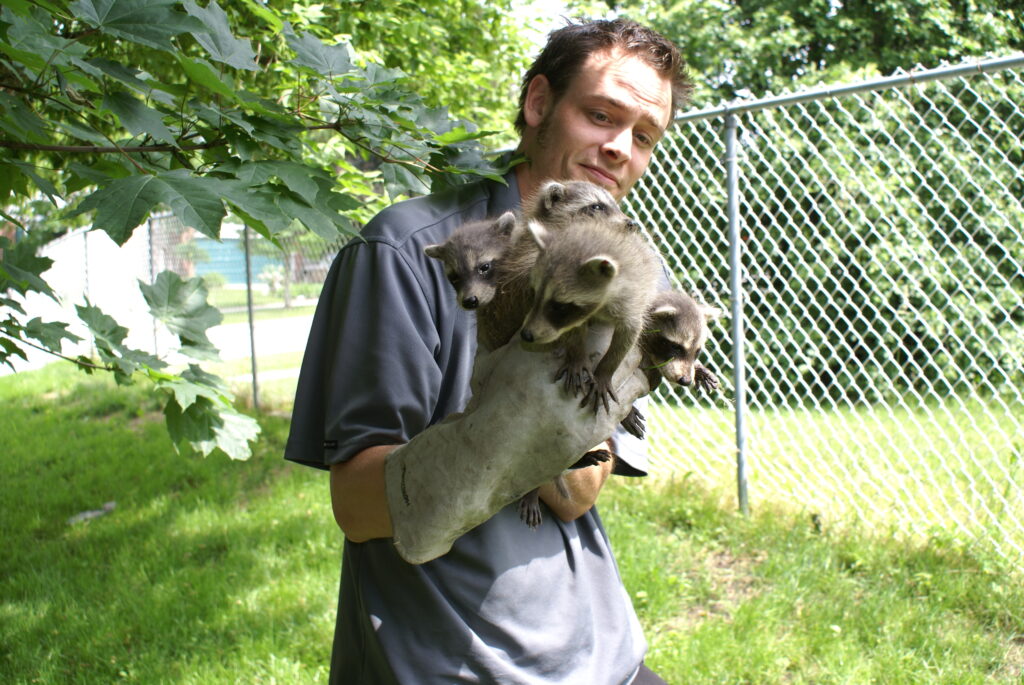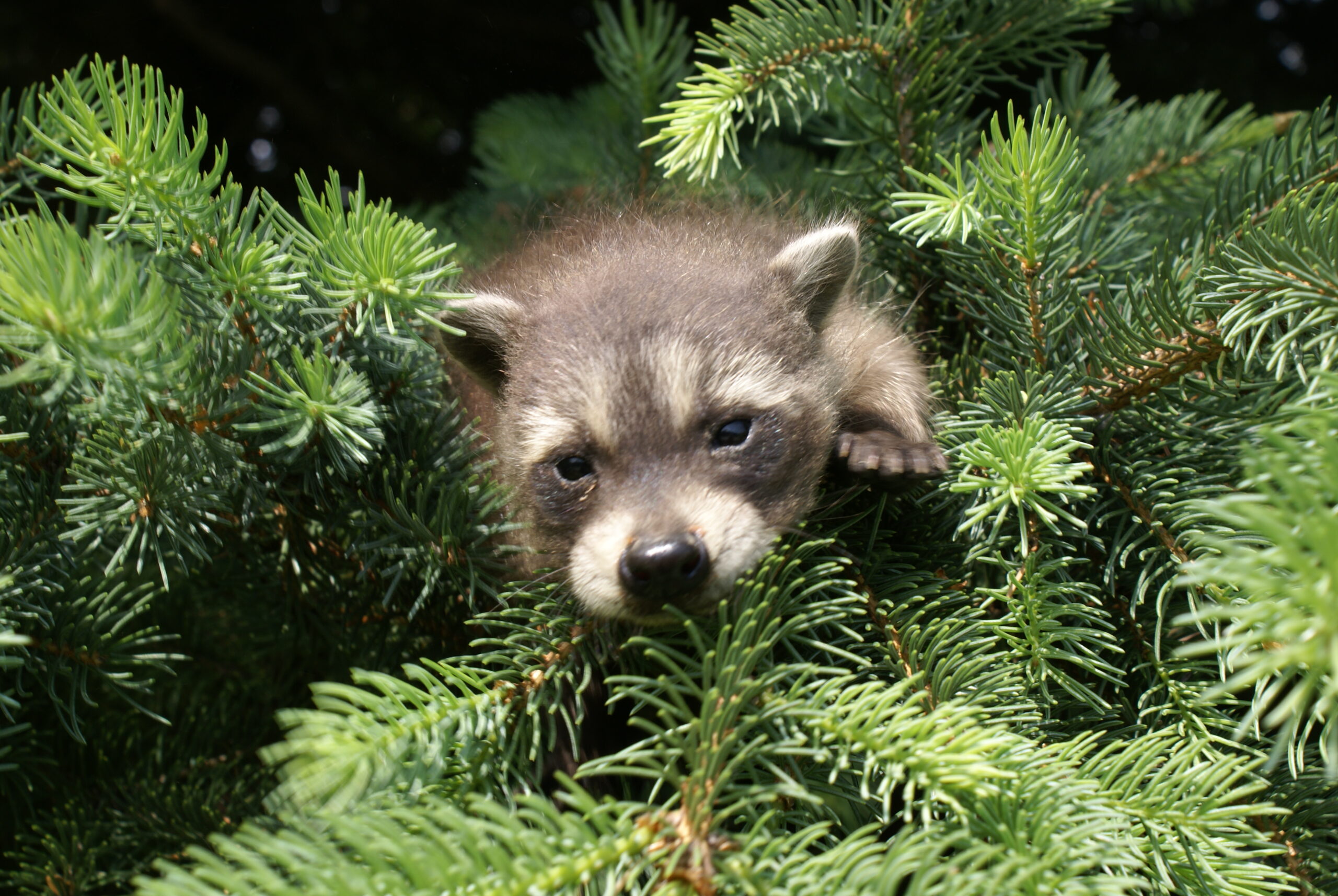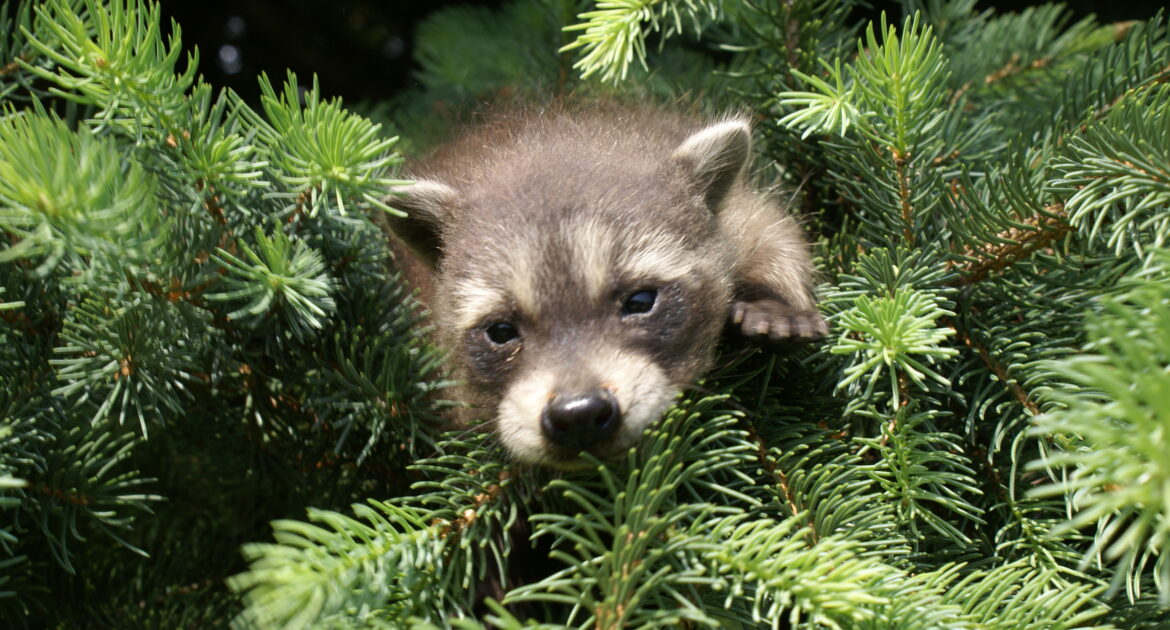The ingenuity of raccoons is unparalleled. They will make nests in hollowed-out trees, in the crux of branches, in leaf piles near trees, in fallen trees, and firewood; these are only just some tree options for raccoon homes. Raccoons will make their dens almost anywhere, providing them with a safe, mostly covered shelter during the day. They like to be hidden away from sight and light, resting up for their night hunt for goodies. Raccoons prefer diets with food found in or near water but have adapted to that trash and scavenging life too. Not hunting experts, they will eat bugs, eggs, the occasional carrion, and most any leftovers they can get their paws on. Learn to recognize the signs of nesting and what to do for prevention and humane raccoon removal.
Nesting Concerns
So, if raccoons are okay to eat whatever and likely to clean up around the trash bins, is there really a reason to be concerned if they are nesting close to your home in a nearby tree? The answer is yes. Raccoons, in addition to being clever and cute, can be a real problem for homeowners.
- Unwanted visitors
Raccoons are apt at knowing when they need better shelter too. When the cooler months start to roll in, those leaf piles and old logs aren’t going to cut it anymore, especially when there is a home radiating heat and the smell of snacks in close range. While they may not be causing any harm to you, it’s important to discourage them from nesting anywhere on your property before they break into your house. Raccoons will do their best to become roommates with you before you know it, which can become a real problem.
- Unwanted dangers
Raccoons aren’t on the hunt for humans or household pets. You may never even see a raccoon except for the signs of nesting. But, raccoons can still be dangerous to your family. Raccoons can carry roundworm, rabies, distemper, leptospirosis, and a lot of tiny ticks, fleas, and lice that you don’t want making their way into your yard and then your house.

Nesting Signs
Knowing the signs of raccoon nesting either in nearby trees or around your home will help inform you when to call wildlife control in Madison, which is the first sign. Observe trees and brush around your home in addition to any loose boards around the exterior of the building. You are looking for the following signs of raccoon life:
- Scratch marks
- Little handprints on surfaces
- Tracks in surrounding areas
- Collections of trash or debris for nesting
- Trash bins that have been pilfered
- Droppings or urine
- Sounds of scratching or rummaging
Nesting Prevention
To prevent nesting from taking place, there are a few actions you can take to help secure your property. Skedaddle Humane Wildlife Control in Madison can help with prevention protocol in addition to human removal of raccoons if nesting has begun.
- Secure trash bins with weighted, locked, or animal-proof lids.
- Remove any pet water or food bowls at night time when raccoons hunt.
- If you have fruit trees, be sure to harvest and trim regularly.
- Cover tree hollows with mesh to block the entrance for nesting.
- If you have outdoor animals, securely lock their hutches or coops.
- Clear out any debris near the home.
- Trim back trees that hang near the home; leave no bridges to the roof.
- Never feed raccoons.
Nesting Removal
Never attempt to touch or remove wildlife or their nests on your own. Trying to handle the removal process on your own can be dangerous. Call in the professionals at Skedaddle Humane Wildlife Control to assess your property for signs of nesting, prevention protocol, and humane raccoon removal.




